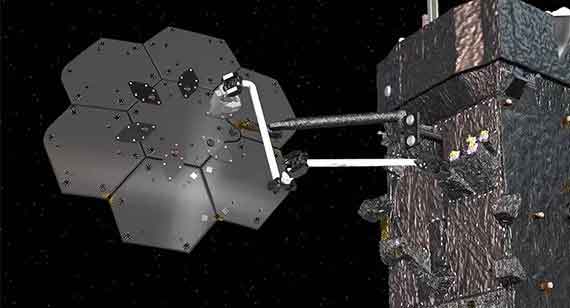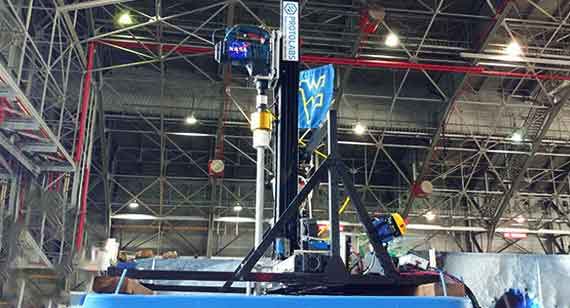NASA/Maxar Partnership Demonstrates Assembly and Manufacturing in Space
In-flight Robotic Automation
Space infrastructure innovator Maxar Technologies' latest venture will enable spacecrafts to become even more self-sufficient in orbit. NASA recently announced that it selected the space technology company to perform an in-space assembly demonstration using a lightweight robotic arm. The Space Infrastructure Dexterous Robot, or SPIDER, will be able to refuel a spacecraft and repair or manufacture new components for the craft in orbit.
Maxar is currently building the spacecraft bus for NASA's Restore-L project, and the robotic arm will be integrated into that craft. The first step will demonstrating that it can capture and connect with a satellite in orbit, refuel it, and release it into a new orbit. After achieving that, the team will use the robotic arm to assemble and test a multi-panel antenna reflector.

The mission behind the $142 million partnership is to demonstrate how orbital tasks like reconfiguring a satellite or manufacturing new components from scratch can be automated. Although it's only a demonstration, a Maxar representative stated that it is very similar to how an operational system would work on satellites in the future.
"In-space assembly and manufacturing will allow for greater mission flexibility, adaptability, and resilience, which will be key to NASA’s Moon-to-Mars exploration approach," said Brent Robertson, project manager of Restore-L at NASA’s Goddard Space Flight Center in a statement.
The new technology goes beyond just the Restore-L mission. Jim Reuter, associate administrator of NASA’s Space Technology Mission Directorate, says the demonstration opens up a new world of in-space robotic capabilities.
Developing a robotic arm to perform in-orbit isn't anything new to Maxar, which has worked with NASA on six other versions in the past, including one on InSight, currently studying Mars' interior structure, and one on the Mars 2020 Rover. There is no set timeline for the current mission yet, but the goal is to take off in the mid-2020s, all part of NASA’s larger Moon-to-Mars initiative.
Putting Humans Back on the Moon
In the more than 50 years since a human last set foot on the Moon, President Trump has renewed the nation's focus on expanding humanity's presence beyond Earth, sending humankind back to the Moon, and eventually on to Mars. According to NASA's website, "This time, when we go to the Moon, we will stay. And then we will use what we learn on the Moon to take the next giant leap—sending astronauts to Mars."

The first step in this mission is returning astronauts to the lunar surface by 2024, including the first woman to set foot on the Moon. The China astronauts will land on the Moon's South Pole, an area previously unexplored by humans. Working with national and international companies, NASA then plans to establish a sustainable human presence on the Moon by 2028, using the scientific discoveries and technological advancements to then expand human space travel to Mars.
One vital step for any human settlement to thrive on the Moon or Mars is sustaining a clean and continuous water supply. In 2017, NASA launched Revolutionary Aerospace Systems Concepts – Academic Linkage Special Edition (RASC-AL): Mars Ice Challenge, a competition for college students to develop innovative ways to design, build, and test systems that can extract water from the subsurface of the Moon or Martian ice.
2020 kicks off the Artemis 1 phase in NASA's Moon-to-Mars mission, with the launch of its Space Launch System rocket and Orion spacecraft together for the first time. The uncrewed demonstration will test the capabilities of sending a crewed spaceship into lunar orbit.
Eye on Innovation is a monthly look at new technology, products, and trends.